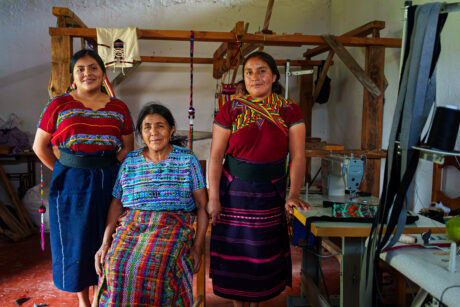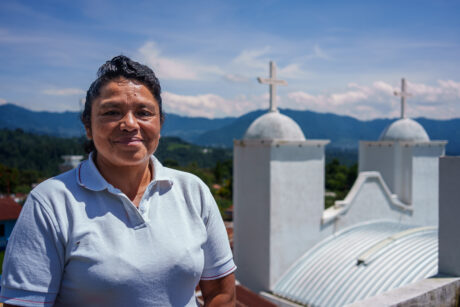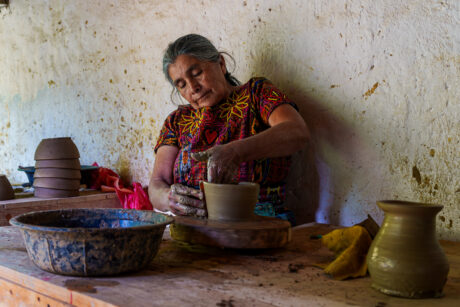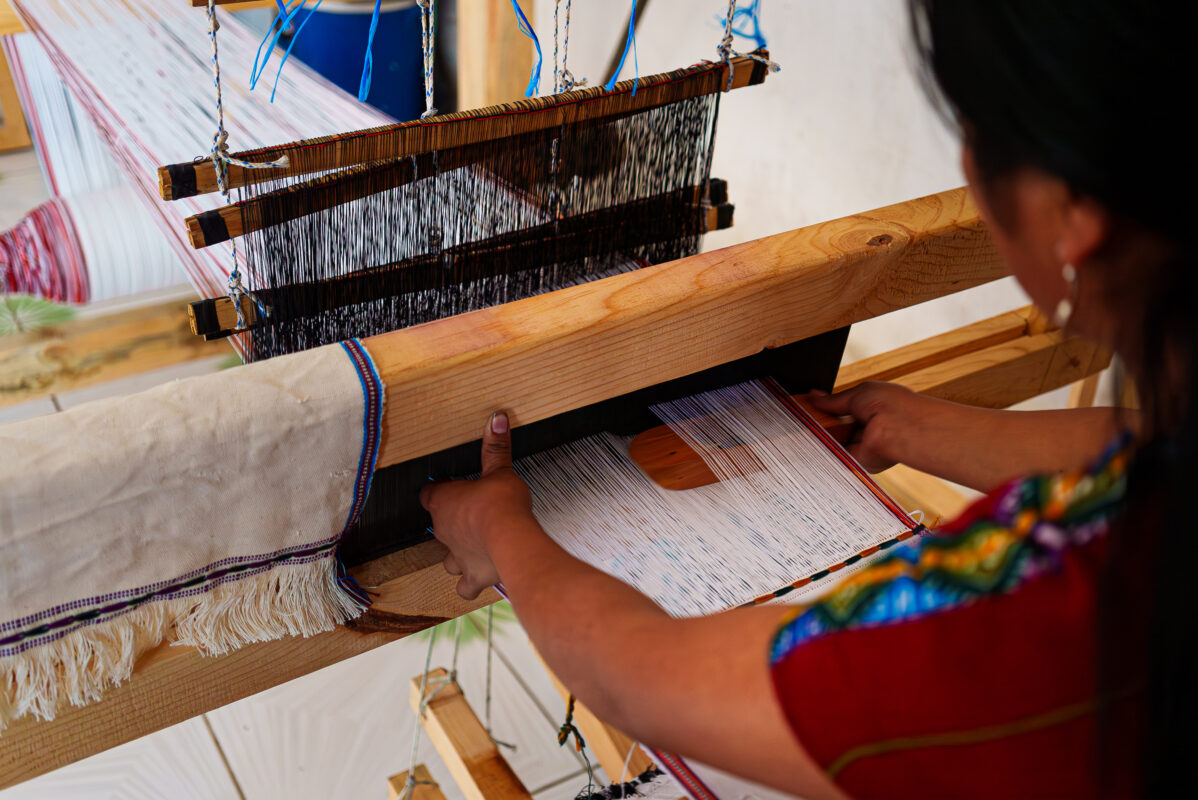For the Maya, “nahual” is the energy, spirit or strength that brings to life and guides a person each day. Everyone has a nahual, which is based on the day that they are born, and it connects them with nature to promote harmony and balance. Nahual represents the wisdom, qualities, strengths and weaknesses of each person and is a protective spirit.
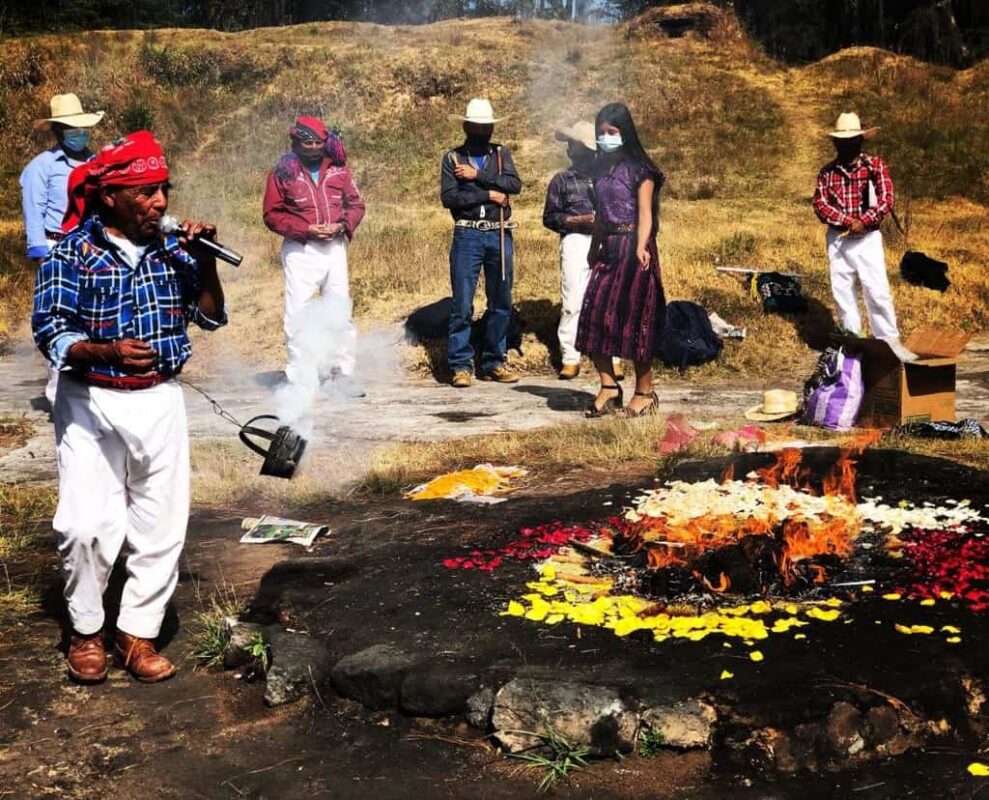
The nahual day of Kawok, Dec. 13 – which symbolizes community and connects the Maya to their ancestors and future offspring – was chosen by indigenous authorities and youth leaders from San Andrés Sajcabajá in the Guatemalan Department of Quiché to hold an exchange to strengthen their bonds with youth and to provide hope for the future.
“The youth are very important for us. If we lose our youth, we lose everything,” said Cirilo de León, an indigenous authority from San Andrés Sajcabajá. “That is why we are here today, with the youth. It is important that they do not lose hope.”
Leaders selected the Qʼumarkaj ruins, which was once the capital of the Maya Kʼicheʼ people, for the Dec. 13 gathering. Youth leader Gersón Ixcuná explained that “this place is very special for our roots; our ancestors came to the place, which represents our indigenous Maya origins. So, we’ve come to this place to share with the indigenous and political authorities.”
The Dec. 13 exchange was organized by the USAID-funded Peacebuilding Project, known as Tejiendo Paz in Spanish, and implemented in coordination with the Guatemalan government initiative known as La Ruta – Reunion entre Pueblos, which includes the municipality of San Andrés Sajcabajá. The Peacebuilding Project began working in San Andrés Sajcabajá in 2021 with funding from the Complex Crises Fund.
Peacebuilding Project addresses four categories of conflict: youth, girls and families; governance; natural resources; and land. The five-year program is implemented by Creative Associates International with partners Fundación ProPaz and PartnersGlobal.
Peacebuilding Project has identified inter-generational conflict as a priority. As youth are exposed to different cultures through technology and migration, adults fear that youth are losing their traditional identity or are becoming involved in criminal activity. These factors have resulted in an inter-generational gap.
Indigenous authorities respond to local conflict
The communities where the project is working are predominantly indigenous. The Peacebuilding Project has developed an Indigenous Peoples Engagement Strategy, which ensures the active participation of indigenous groups in the design and implementation of local initiatives.
To further make certain that the identity, promotion and rights of indigenous practices and rights are fully integrated into initiatives organized by Peacebuilding Project, the project has a community implementation team that is comprised of professionals who come from the Western Highlands and are fluent in the indigenous languages.
Miguel Balán, who is Maya Qʼeqchiʼ and the Social Conflict Manager with Peacebuilding Project, explained how the team uses the strategy to support the target communities.
“Indigenous authorities, particularly in this exchange, promote one of the principles of indigenous law called Komonil, [which is] the sense of community,” he said. “This is a form of peacefully resolving conflicts. They provide ancestral knowledge to youth in order to preserve their traditions.”
Indigenous authorities are key project partners in resolving social conflict and preventing conflict from escalating into crisis and violence. Their ancestral knowledge, systems and practices are fundamental for the implementation of effective, alternative mechanism of dialogue, mediation and negotiation.
During the Dec. 13 gathering, indigenous authorities spoke about their successes in resolving land conflicts during the exchange, including the use of dialogues among neighbors to resolve property boundaries. They also discussed the importance of protecting natural resources, engaging in reforestation and preventing illegal logging.
“We do not use violence or lynching [to resolve conflict]. We use dialogue and coordination with judicial authorities,” said Cirilo de León.
Conflict also happens at home. “Of the conflicts that exist in our communities, the most common is inter-familial violence,” said Cirilo de León. He explains that lack of access to economic resources limits the ability of women to pay for transportation and other costs to report the violence. The indigenous authorities are committed to supporting the women, either through dialogue or through formal legal mechanisms.
Youth want spaces for meaningful participation
“Conflicts that youth face are different from those of the adults,” said Gersón Ixcuná, a youth leader who participated in the Dec. 13 exchange. “The adults fight over land rights, they fight over access to water and there are conflicts within families. But for youth, the biggest obstacle is the lack of access to opportunities,”
Youth are often not included in decision-making bodies, such as local development councils. When they are allowed to participate, unfortunately, they struggle to make their voices heard. Some adults have fears about youth delinquency, which leads to repressive responses and erodes trust. The project views youth civic participation in local peacebuilding initiatives as an opportunity to strengthen inter-generational relationships, bridge the inter-generational gap, and promote positive perceptions of youth.
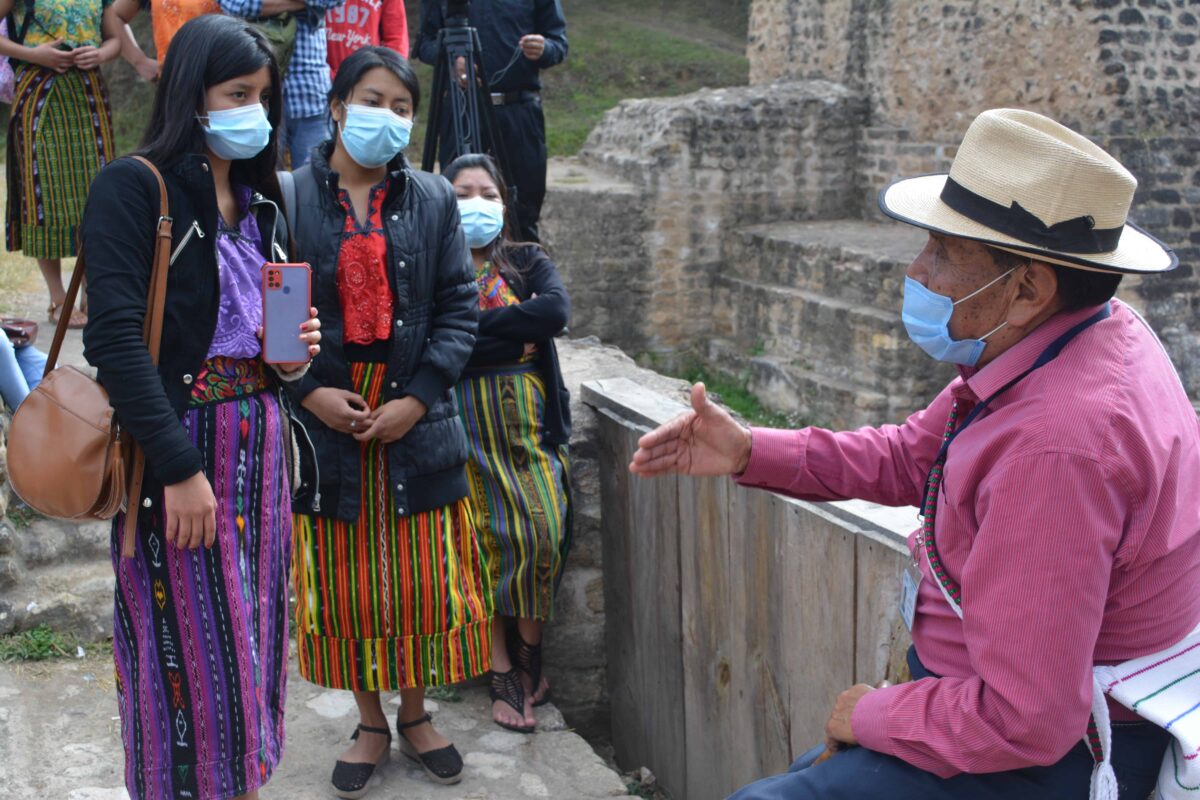
“The youth have an essential role in making decisions and transforming our community and society,” said Gersón Ixcuná. “Doors are often closed to us due to lack of experience and lack of knowledge, but we are capable of learning and we need doors open to us.”
Youth leader Karla Hernández said youth need to take an active role in making change happen. “It is our responsibility as youth to make change. We often say that the adults should do it but if they aren’t going to do it, we can do it. We should not limit ourselves as youth. Sometimes we are afraid, but we need to lose the fear and raise our voices.”
During the exchange, Pedro Tix Gonzales, the Mayor of San Andrés Sajcabajá, announced the planned opening a Municipal Youth Office in 2022. He highlighted the strong youth participation in the municipality and encouraged them to stay engaged so they can improve the situation for others from those spaces.
Karla Hernández shared that she “hopes that the municipality and indigenous authorities take into consideration the youth. There have been activities with youth, but they give us spaces related to sports and recreation. But we want to be taken into consideration in important decisions. So, it is important that municipality does not open its youth office, like the mayor mentioned, just for recreation but also so that youth have opportunities for employment and entrepreneurship.”
The risks and reality of migration
A reality that was addressed during the exchange is that youth continue to their irregular migration to the United States in search of economic opportunities. On Dec. 9, there was a catastrophic crash in southern Mexico that killed at least 54 and injured more than 100 people who were migrating from Guatemala to the United States. One of the people who died was a 21-year-old from San Andrés Sajcabajá.
During his speech at the Dec. 13 event, Mayor Tix Gonzales acknowledged the loss for the community and that these are the real risks of irregular migration. He told the youth that he hopes they will not think about migrating and will look for opportunities in their communities.
Youth leader Karla Hernández recognized the factors that drive irregular migration. “Something that often influences migration, other than lack of economic opportunities, is the lack of family integration,” she said at the gathering. “Frequently, there are conflicts within families” that drive irregular migration. It is a vicious cycle; migration contributes to family disintegration and increases vulnerability of children and youth, she added.
Cirilo de León said irregular migration was one of the factors behind the Dec. 13 event.
“What we thought [in organizing] this activity is that the youth will not think about traveling to other places. If we abandon them, they will start to think about leaving for other places,” he said.
When speaking about the causes of migration, Gersón Ixcuná shared that “this is our reality and we do not want the future to be the same. We are youth and we want a better future for our children. For this reason, we raise our voices.”
A beginning
Florinda Puac, who is Maya K’iche’ and Peacebuilding Project Community Supervisor, acknowledged that the Dec. 13 event is a step in the right direction. “This exchange is important because it is expected to be the beginning of inter-generational relaying of information and allowing the youth to have substantiative participation in their communities,” Puac explained.
Karla Hernández echoed Puac’s comments. “We hope that the indigenous authorities will invite the youth to participate because as youth it is important that we know we have roots, that we are not stuck here and do not know where we are going. We have a past, and we will have a future. But in the present, we should have the support of adults and we should look for opportunities.”
Sara Barker is the Chief of Party of the USAID-supported Peacebuilding Project/Tejiendo Paz in Guatemala.
